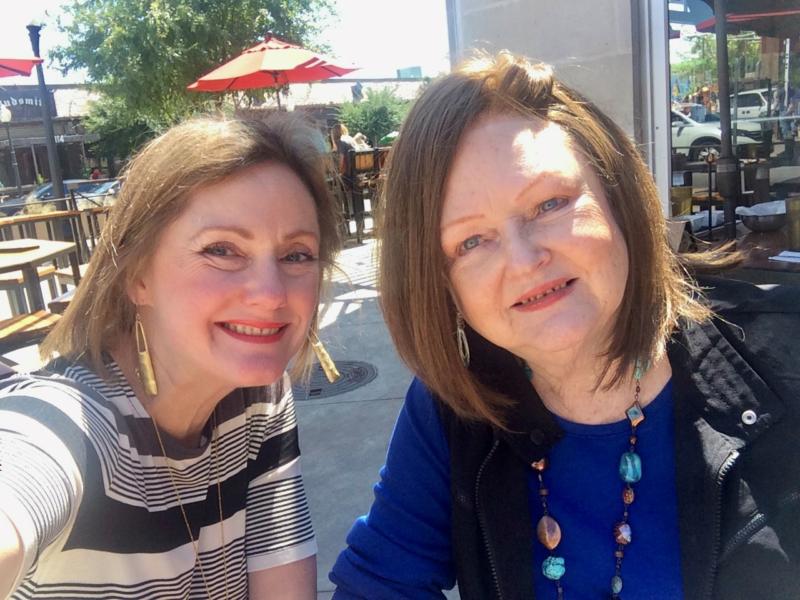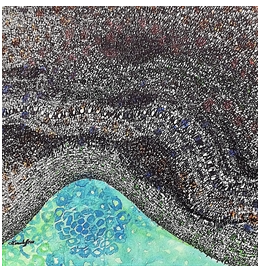Moving Forward with T1D: Tanya Conovaloff
Get to know Tanya Conovaloff, Community Engagement Manager for our North Texas and Oklahoma Chapter, who has lived with T1D for an incredible 46 years.
This year’s NDAM theme is “Forward.” Throughout the month, members of the T1D@JDRF Employee Resource Group are excited to share their stories about life with T1D, how they have continued to move forward since their diagnosis, and why it is so critical to keep JDRF moving forward toward cures.
Get to know Tanya Conovaloff (TC), Community Engagement Manager for our North Texas and Oklahoma Chapter, who has lived with T1D for an incredible 46 years.
Tanya’s mother, Martha Quinn (MQ), also shared her perspective as Tanya’s caregiver during childhood.
What were you told at the time of your diagnosis that’s no longer true?
TC: I remember leaving the hospital with the messages that my life expectancy was around 35, but I would most likely either lose my vision or a limb before then. I definitely would not be able to have children.
MQ: The doctor and nurse where she was diagnosed were both equally negative about all of the horrible things that could happen if her blood sugar was not in control, including foot or leg amputation and blindness. Those still linger in my mind today. I struggled with how much information I should be sharing with Tanya. I felt torn between giving her too much negative information, versus giving her too little.
How has your treatment plan changed/improved since diagnosis?
TC: When I was first diagnosed, we didn’t have at-home blood testing meters. The only way I could measure the level of sugar in my system was with a urine test before each meal. It gave me ranges based on a color chart, so for example, I was somewhere between 200-250 if the color was orange. We now know that is “old” information since by the time sugar is in your urine, it’s out of the bloodstream.
The insulin I used came from pigs and cows so it was not stable, would easily go bad and could be unpredictable. We also didn’t know about carb counting or ratios for taking different measurements of insulin. So, I needed to eat at the exact same time each day, with the exact same amount of “exchanges” of the basic food groups in each meal, with no variation on my schedule. Talk about progress and how JDRF has moved treatment forward over these past decades!
How do you navigate the mental toll and burnout that living with T1D can cause?
TC: Since I’ve lived with this so long, I’ve definitely experienced times of mental exhaustion, frustration and anger, especially around the complications I’ve experienced (eye surgery due to diabetic retinopathy and coronary heart disease and trigger finger surgery).
One way I dealt with the tough times was through creating art. I painted a series that depicted a full and happy life, but overlaid with messages, fears and all the diabetes micromanaging that I was dealing with (pictured below). It was a huge relief to get some of that out there, even if only I understood it.
What are some factors that impact your blood sugar that others might be surprised to learn?
TC: Flying sends my blood sugar plummeting for some reason and coffee sends it skyrocketing.
This is a very exciting time for T1D research. What are you most looking forward to in the months and years ahead?
TC: SO MUCH is exciting. I’m a huge fan of the research we are doing partnering with CRISPR! I love science and to hear about genetically altering beta cells to be unrecognizable to the autoimmune attack is amazing! Plus, no immunosuppressants needed!
Is there anything you would like your co-workers to know about life with T1D?
TC: We have come SO far, but we still have so far to go. It’s all day, every day. It’s exhausting and frustrating and scary and sometimes just doesn’t make sense. One of my favorite sayings is, “For people without T1D, 2+2=4. For people with T1D, 2+2=Banana” AND it’s given me my purpose—to support others diagnosed with this disease through my work at JDRF. Truly, this is my dream job. Although don’t get me wrong, I’d be very happy to find another dream because we cure T1D!
What has it been like to see your only daughter live with T1D and develop into a successful adult?
MQ: When Tanya was diagnosed at age 9, I went through all 5 stages of the Kubler-Ross model of the grieving process. I was in denial, skipped anger, bargaining, depression and finally acceptance. Once I went through the acceptance process, I tried to focus on her emotional well-being, along with her physical health.
She is an exceptional, independent, caring, loving individual who truly is devoting all of her efforts toward enhancing the lives of those with type one. She is dedicated to her profession as an employee of JDRF. She thrives on working for JDRF even with the long hours and expanded territory. She does not complain. And I would still trade places with her, even today, but that is unrealistic.
What was it like for you to transition from being caregiver to standing by watching her live her life. How hard was it to give up that role?
MQ: I look back on those years and I hope I was not a “helicopter Mom” but I might have come very close. I thought that I was the only person who really understood what she needed and what was best for her. When she left for college, I asked some of her closest friends to keep a watchful eye on her. I was always worried about her low blood sugar levels or reactions.
I finally relinquished that role. She is so smart and well informed and has the latest pumps and the best Doctors that Dallas has to offer. We are so fortunate to live in a big city that has so many fabulous Doctors. It was not easy to give up that role.
She is the love of my life and the best thing that has ever happened to me.

